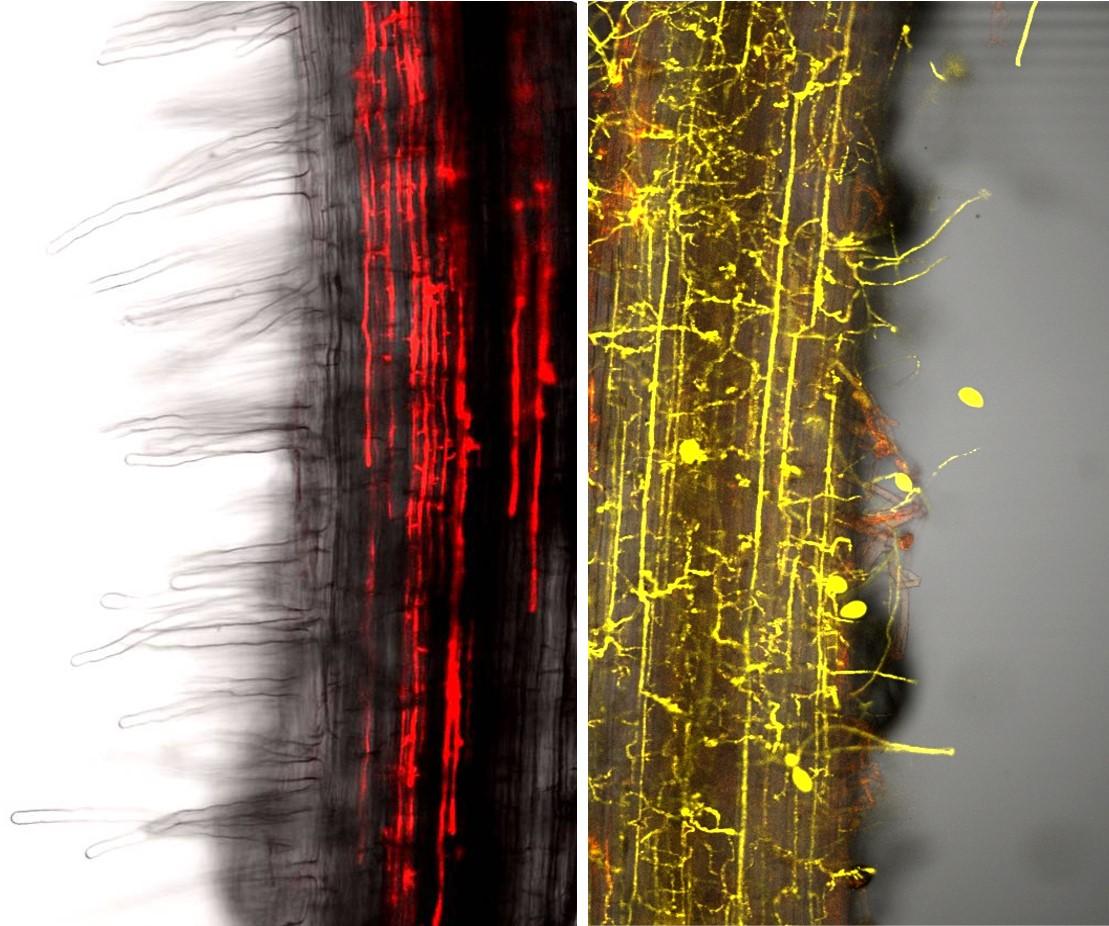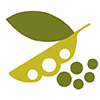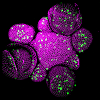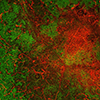
The health of a plant is dependent on successfully navigating a diverse world of plant colonizing microbes. For many plants, a fundamental challenge is facilitating colonization of beneficial symbionts whilst also deterring colonization of detrimental pathogens. SLCU’s Sebastian Schornack studies common and contrasting processes involved in the interaction of plants with beneficial and detrimental microbes. New research from the Schornack group (Rey et al., 2017, Fuechtbauer et al., 2017) sheds new light on such processes that occur when pathogens and symbionts colonize the roots of legume plants.
Among the most economically important plant pathogens are members of the genus Phytophthora, which includes the potato late blight pathogen. The Schornack group, in collaboration with the lab of Simona Radutoiu (University of Aarhus), has identified a cell periphery receptor involved in a plant’s ability to detect and respond to attempts by Phytophthora palmivora to colonize its roots. Interestingly, the receptor resembles a type that has been associated with chitin perception, but the team found no chitin in the infection structures of the pathogen. Therefore, this type of receptor may mediate perception of additional unknown carbohydrates and serve as an early warning system for roots under attack.
In a second study, the Schornack group found another plant regulator of Phytophthora colonization processes, this time a GRAS-type transcription factor that might be involved in directing gene expression changes in legumes that permit pathogenesis. Remarkably, the same gene was previously identified as facilitating legume root colonization with beneficial arbuscular mycorrhiza fungi. This work, which was in collaboration with Christophe Jacquet and Maxime Bonhomme (LRSV Toulouse), now suggests that the same protein plays a role in legume interactions with both beneficial and pathogenic microbes.
Together the manuscripts, published in the Plant Journal and the Journal of Experimental Botany, contribute to our understanding of similar and divergent mechanisms acting in pathogenic and symbiotic plant-microbe interactions.





